73 Diptera – Brachycera
Brachycera
The suborder Brachycera (“brachy” = “short”, “cera” = “antenna”) is the larger of the two suborders in Diptera. The entire suborder is characterized by having antennae with fewer than five segments. The suborder is extremely diverse, with some fascinating and novel life cycles and reproductive strategies. Some exhibit paedogenesis, and some are larviparous or even pupiparous. Many families show a high degree of specialization, especially the parasitic groups, and many are important for human and domestic animal health, and as bioloigcal control agents.
Tabanidae
If you have done any outdoor work or recreation in northern Canada during the summers, you will recognize this family! Tabanidae includes the horse flies and deer flies. The adults are very strong fliers with haustellate mouthparts and large, often colourful eyes. They can be extremely persistent in their pursuit of a potential blood meal. Much like black flies and no-see-ums, they are pool feeders, and leave a large painful wound. When they are plentiful, they can cause severe blood loss for livestock or unprotected humans. They can also vector diseases, and are important especially in the tropics. The larvae are aquatic or semi-aquatic.
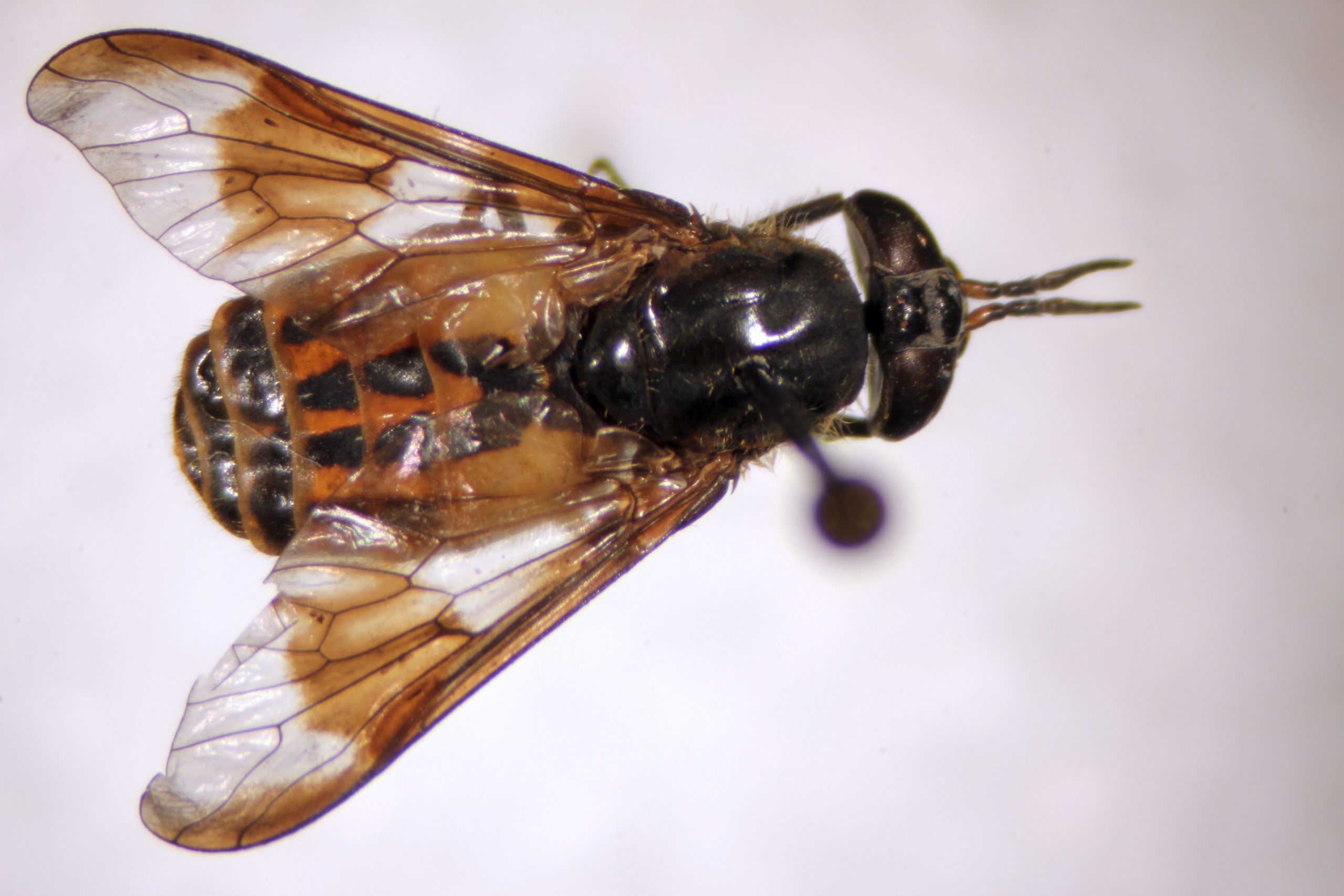
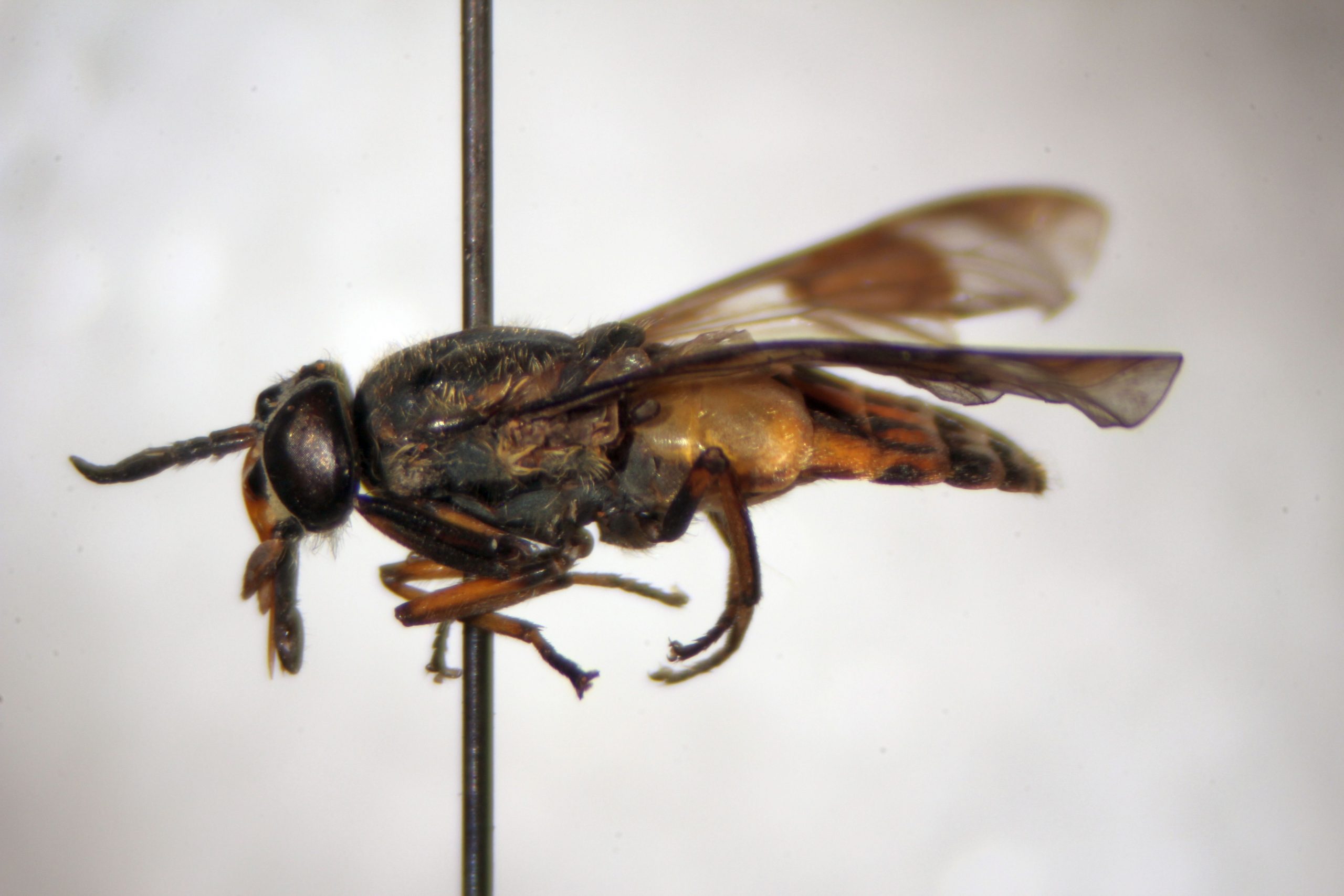
Asilidae
Asilidae, or robber flies, are sturdy, voracious predators. There are about 2000+ species worldwide, and about 850 in North America. Some species are quite large, and they often tend to be fuzzy. One of the distinguishing features of the family is a concave indentation on the top of the head, between the compound eyes; the other is a tuft of setae on the front of the face, called a mystax. Adults sometimes establish feeding or mating territories, and are commonly found on a raised perch somewhere fairly open. When disturbed, they will generally return to the same perch eventually.
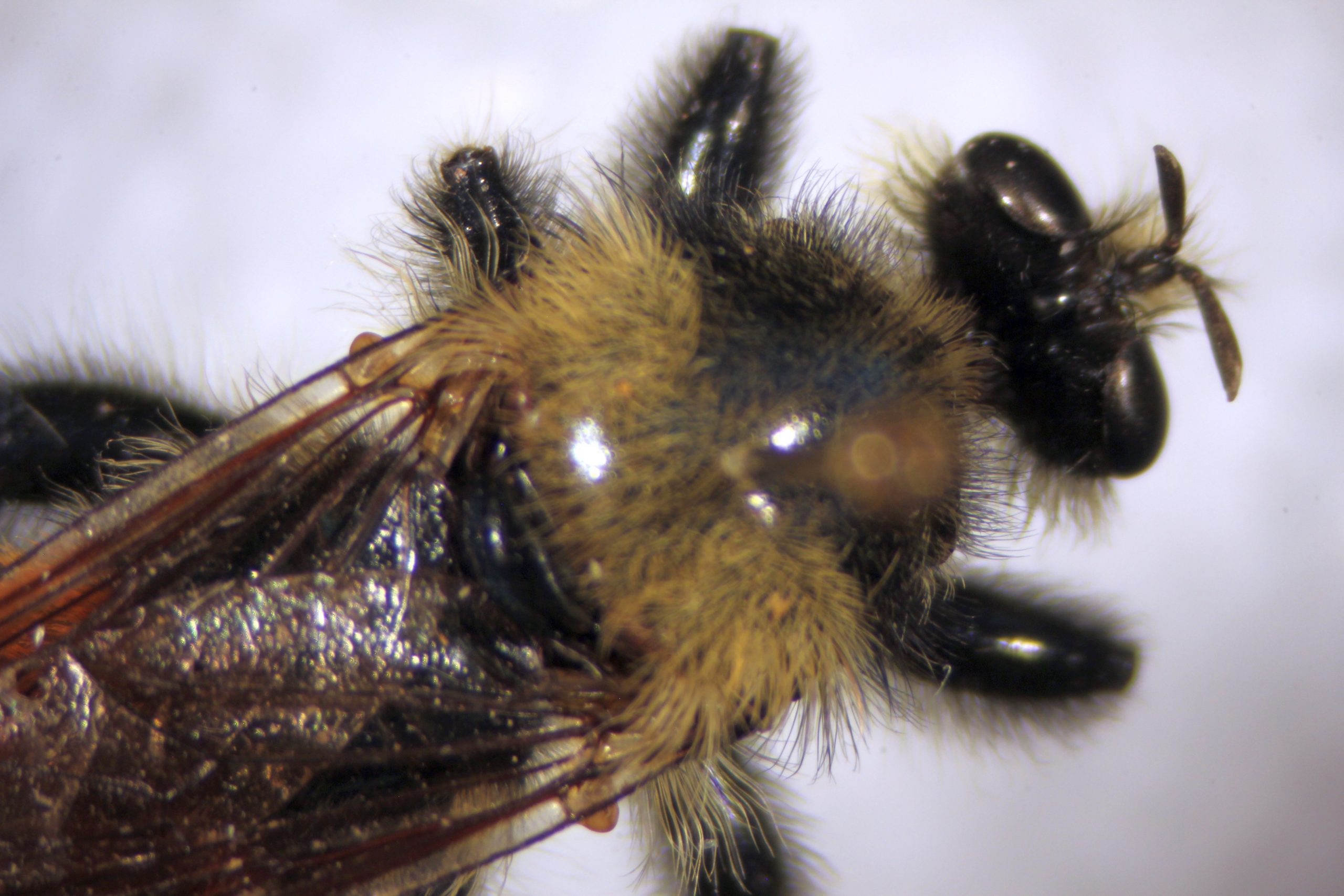
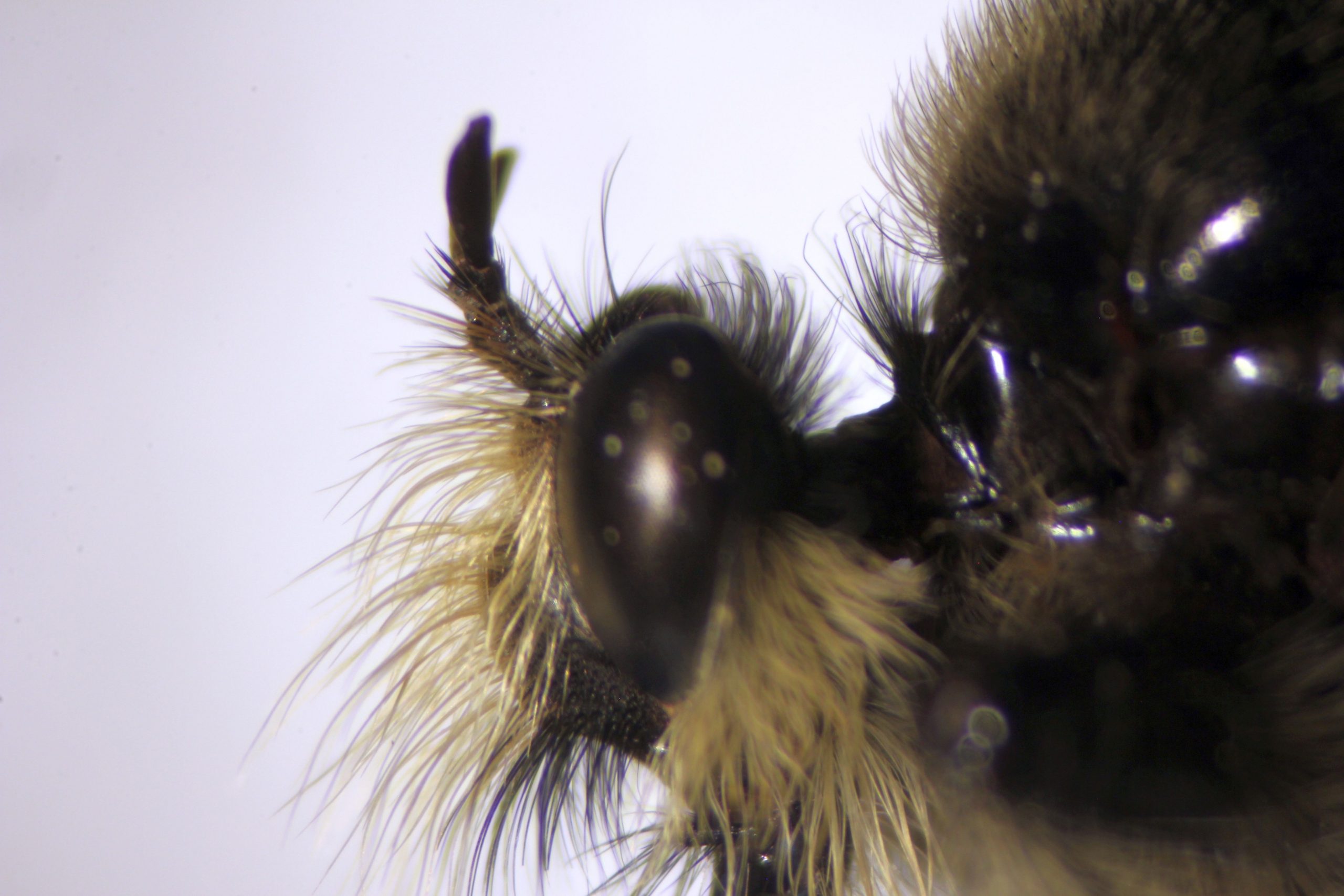
Bombyliidae
Bombyliidae, the bee flies, are plump, hair bee-mimics. Their wings are often patterned with dark markings and held out to the sides even when at rest. Some have a long proboscis that is non-retractile. Larvae are found in the soil, and are predatory or parasitic on digger wasps and bees.
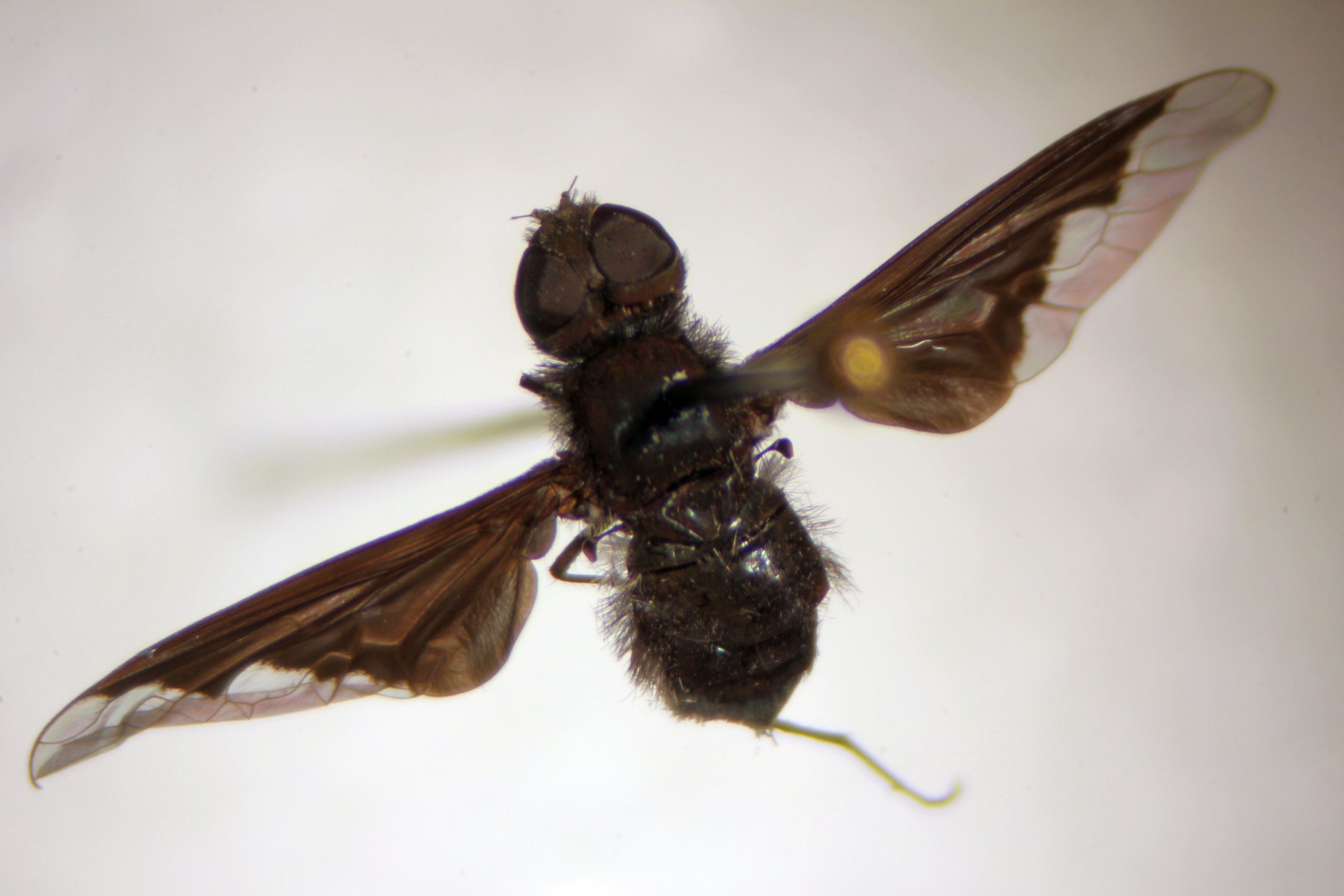
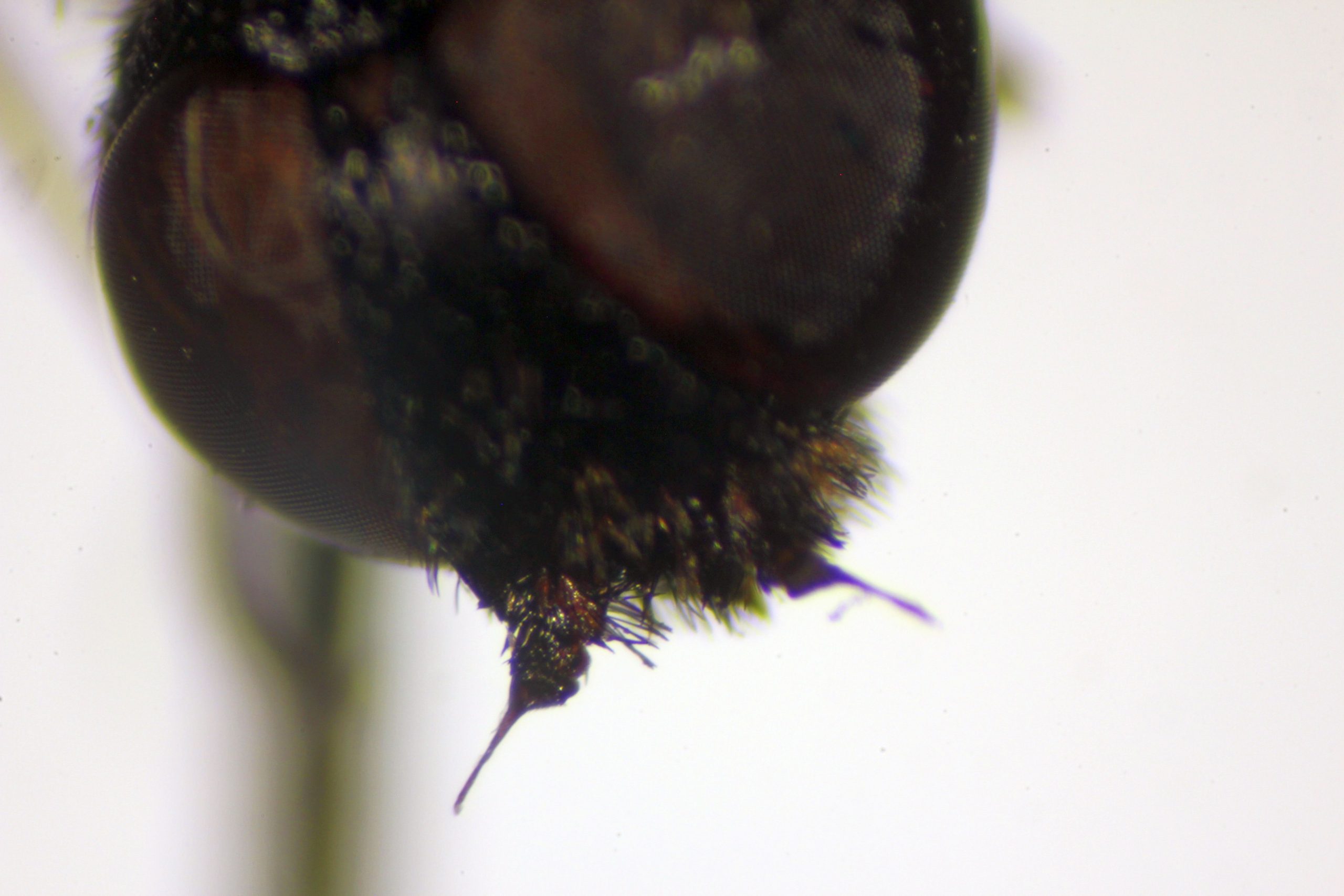
Dolichopodidae
Dolichopodidae, the long-legged flies, have (as you might expect) very long legs in proportion to their body size. Adults are predatory, andthe larvae may be predators or scavengers. Mating often involves complex dance rituals, territories, and mate guarding using visual cues.
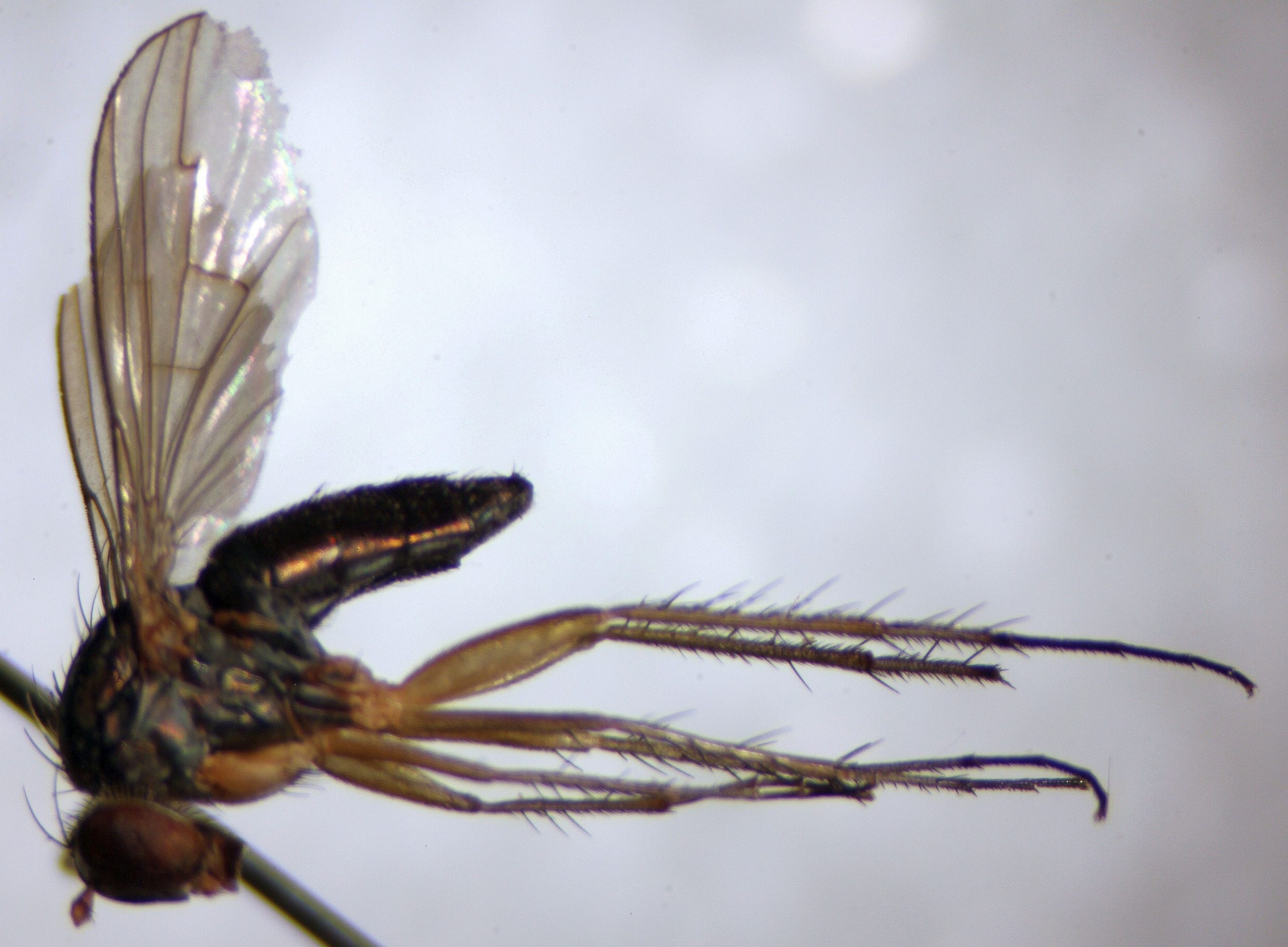
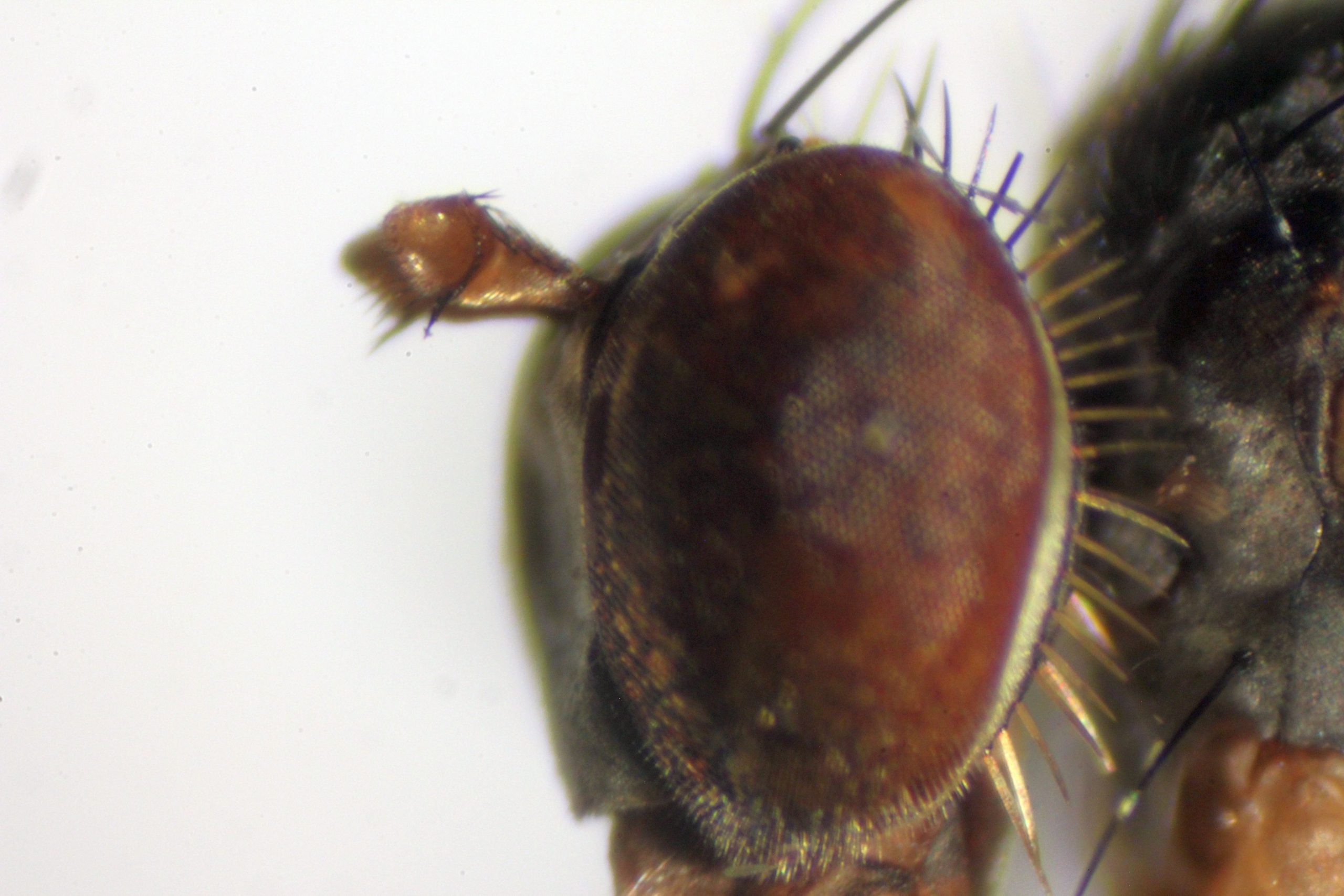
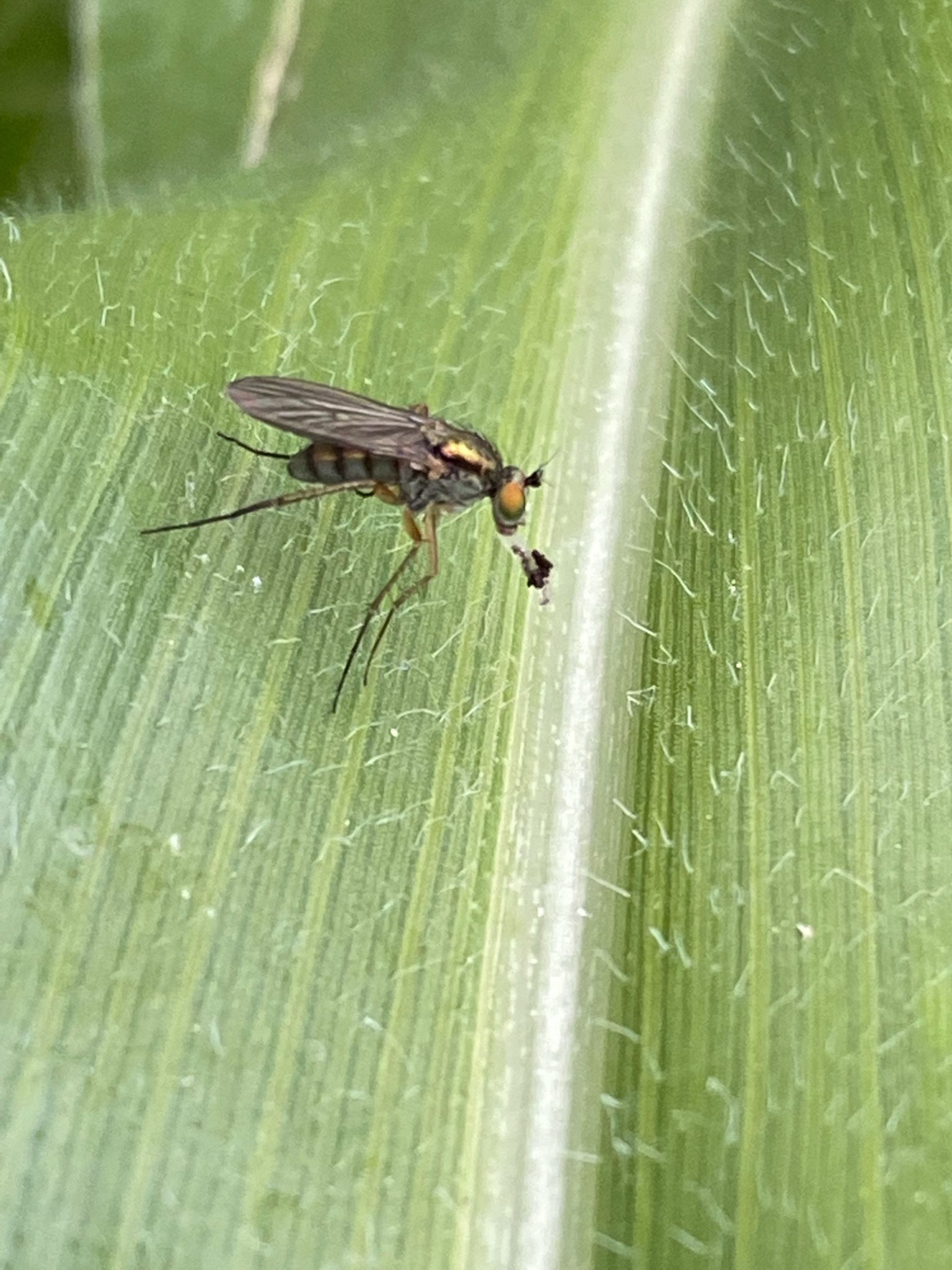
Syrphidae
Syrphidae are the flower flies, drone flies, or hover flies. Most adults are Batesian mimics of stnging Hymenoptera, and many are really good mimics. Adults are usually found hovering at flowers or in other locations, and people often mistake them for wasps. Many of the larvae are active predators of other insects. A few, like Eristalis tenax, have larvae that live in very low oxygen water. Known as rat-tailed maggots, the siphon is often as long as, or even longer than, the larval body.
Distinguishing these from Hymenoptera is important. Hymenoptera have two pairs of wings (although they are often coupled); Syrphidae, being members of the order Diptera, have only a single pair. Adults also have aristate antennae, along with larger eyes and a differently-shaped head than Hymenoptera. The distinctive family-level identifying feature is called a spurious vein. It looks a lot like an extra vein superimposed on the “normal” Diptera wing venation pattern (shown in the wing photo below).
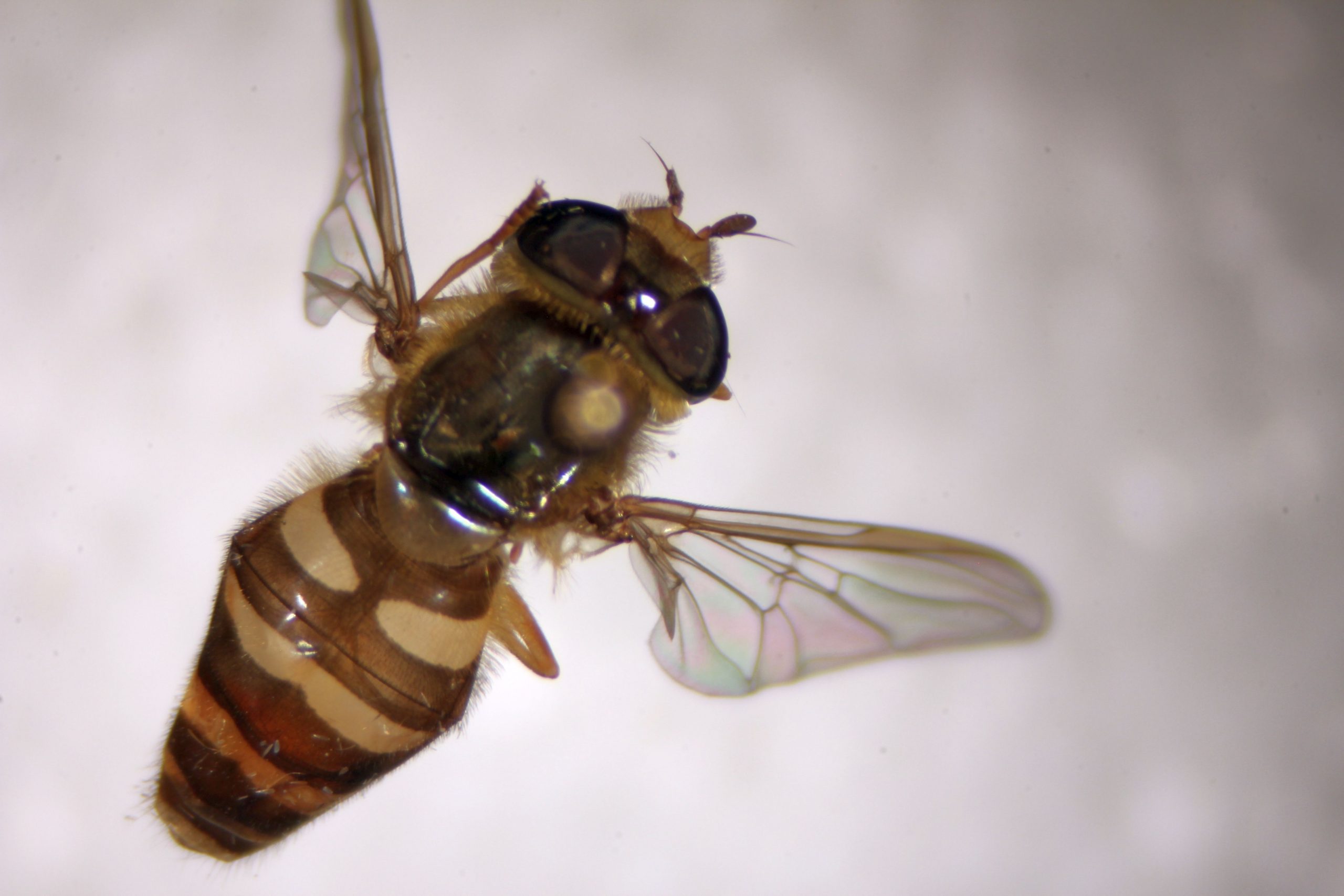
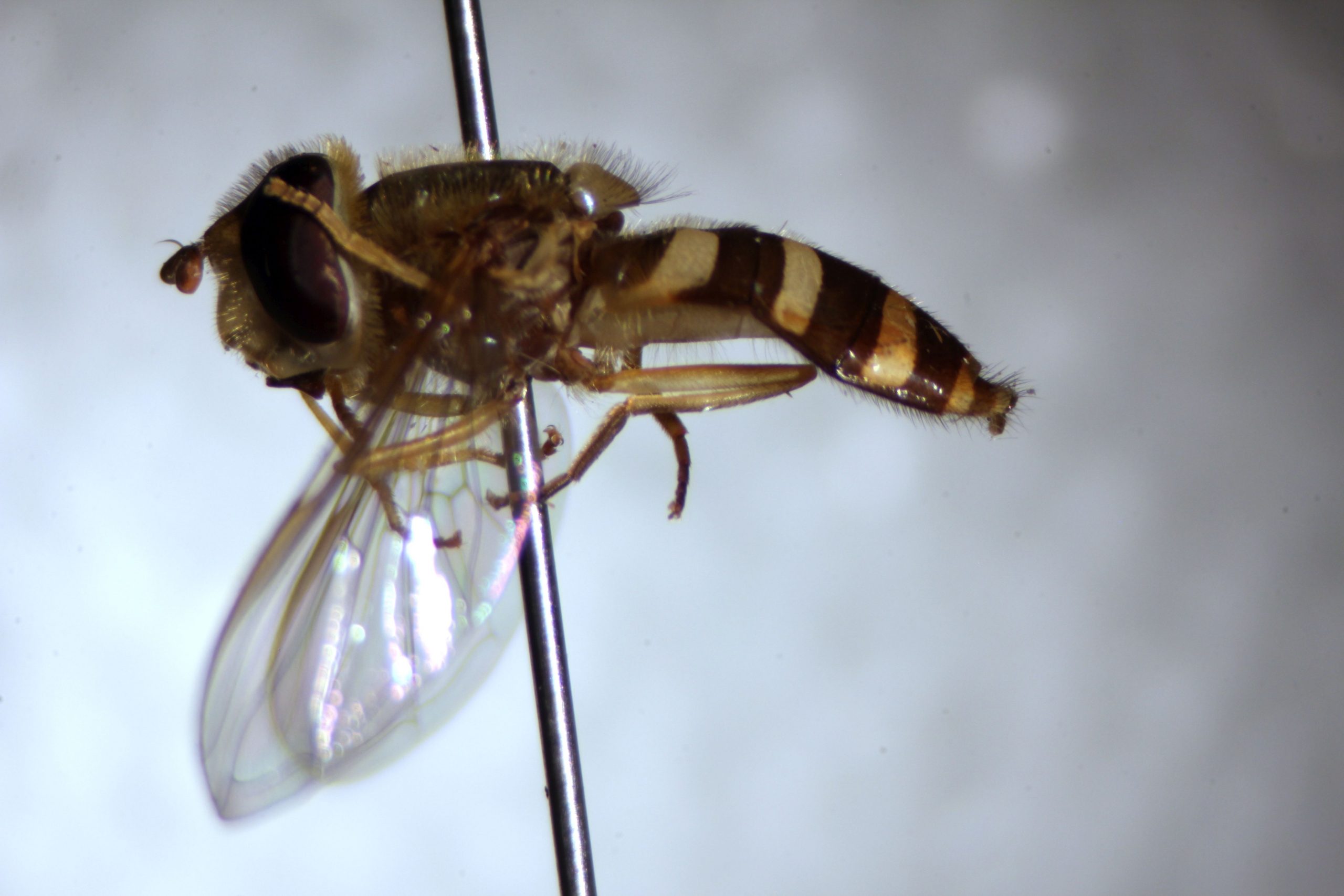
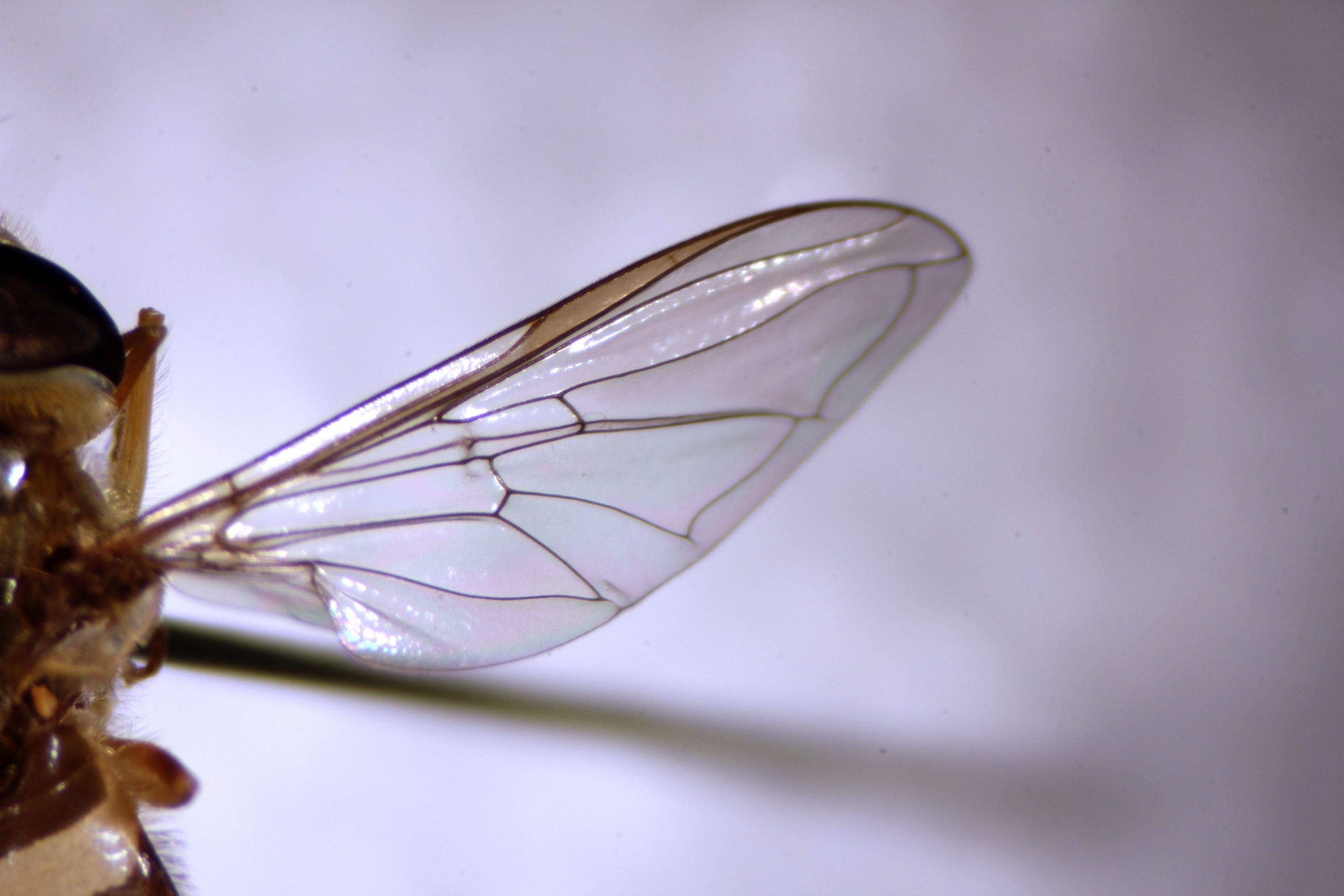
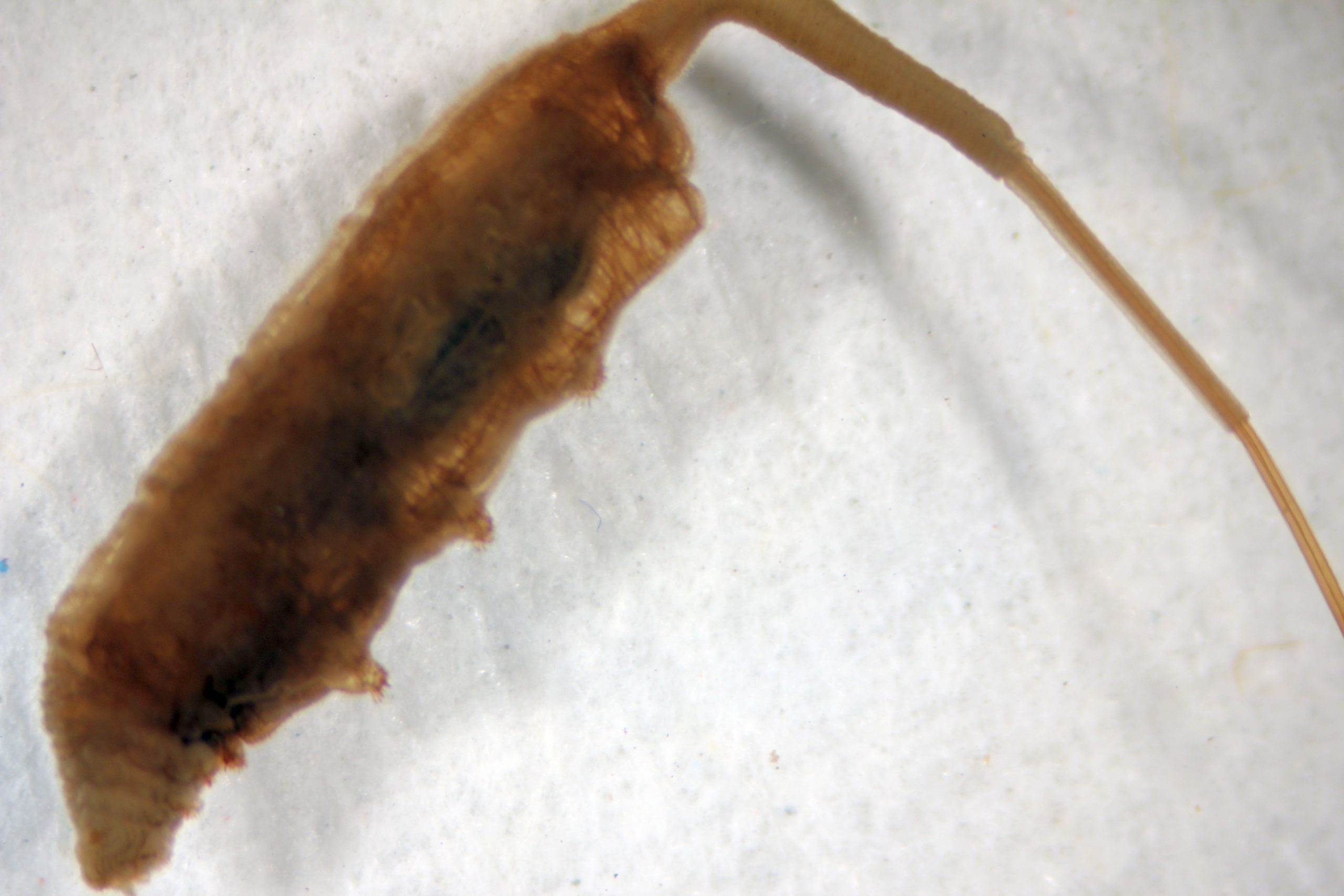


Feedback/Errata